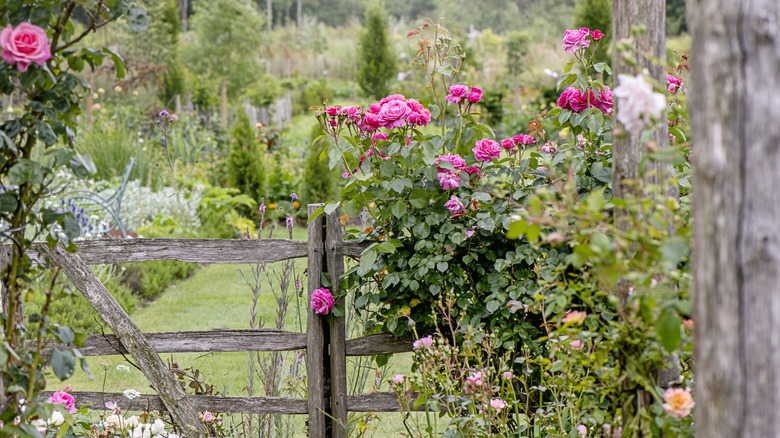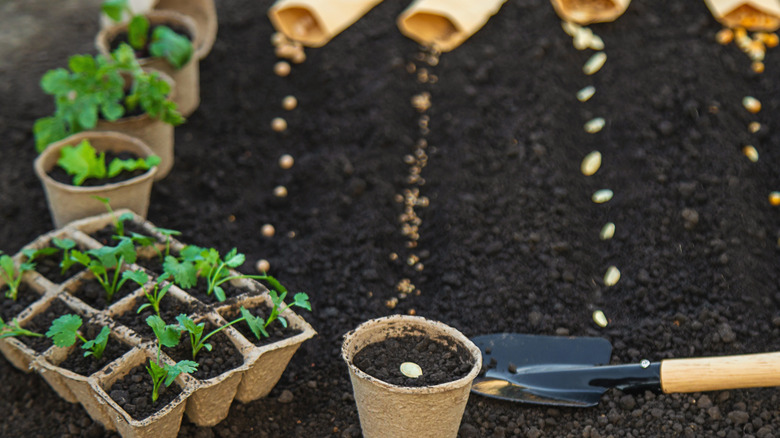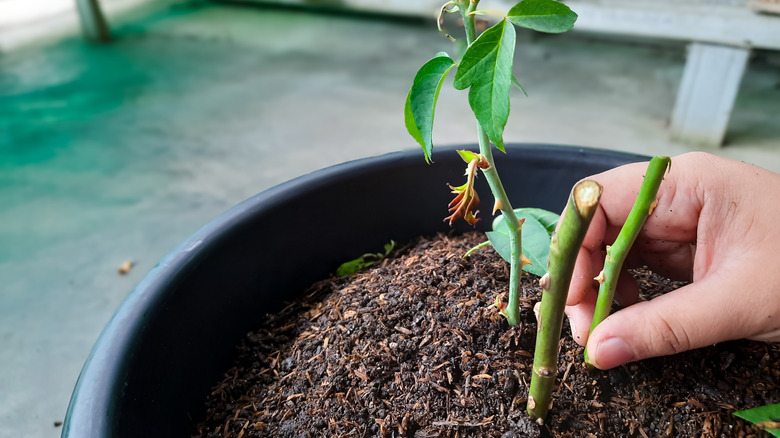Why You May Want To Think Twice Before Growing Roses From Seeds
There are plenty of flowers beginners can easily grow from seed, but roses may not be one of them. Growing roses from seed is a multi-step process, and it can take about a year before you have a plant worthy of even the smallest space in your garden. After two to three months of stratification, seeds can be transferred to a pot for germination, and even then you have no guarantee the rose that grows from your seed will be an exact replica of the rose you took it from. Additionally, they can be prone to fungal diseases, meaning after months of waiting you may have little to show for it.
If you don't mind a bit of mystery and months spent wondering what that rose seed you collected in the fall will turn into, give growing roses from seed a try. But if you're looking for a faster, more reliable way to propagate your favorite roses and fill your garden with them, you may want to consider skipping the seeds and going straight to cuttings instead.
How to grow roses from seed
Let's say you have a favorite rose in the yard, and you're keen to add more to your garden. Here's what that would look like if you grew it from seed. First, you'd have to wait until the rose hips fully ripened, and then collect them in the fall — usually around November. Once you liberate the seeds from the hips, you will clean them and mix them into a moist (but not soggy) seed starting mix, usually perlite or vermiculite. Then it's time to put them in your fridge, or another cold, moist environment, for two to three months. You'll have to start checking the seeds after a couple of months to look for germination.
In late winter or early spring, some of the seeds will have sprouted roots, but some may not — either way they are ready for transplanting. Depending on how big you want your roses to be before they go into the garden, you could be waiting for a year or more. During that time, you will need to manage airflow and moisture levels to avoid common diseases like damping off. And, as we said before, just because you took a seed from your favorite rose plant does not mean it will share all the same characteristics. So even if you end up with a thriving rose in the end, it may not meet your expectations. If you want to give it a try, explore tips and tricks for growing roses from seed.
Discover a better way to propagate roses
For all of the reasons previously stated, you may want to try a different method of propagating your favorite rose: cuttings. There are a couple of ways to tackle this, but for the average home gardener, the process will start in late September (though this may vary depending on your local climate). Find a stem at least 7 inches long that has flowered. Cut away the top and bottom before removing the leaves from the bottom half of the stem. You can also take hardwood cuttings, but it tends to take longer for these to root.
At this point, give your rose cuttings a boost by dipping the bottom in a rooting hormone. Fill a pot with well-draining compost, and use your finger to create a hole deep enough to put your cutting in up to its first leaves. You may want to add more than one cutting to the pot to increase your chances of success. Now, what do you do with the cuttings for the rest of the fall and winter? You can bring these indoors, and within a month or so you may start seeing roots and be ready to transplant them into a new pot. If you have a mild enough winter, you can consider putting your pot outside in the garden and partially burying it in the ground. By spring, you should see roots. If this sounds like a better option, brush up on how to grow roses from cuttings, because even this easier method presents some challenges.


